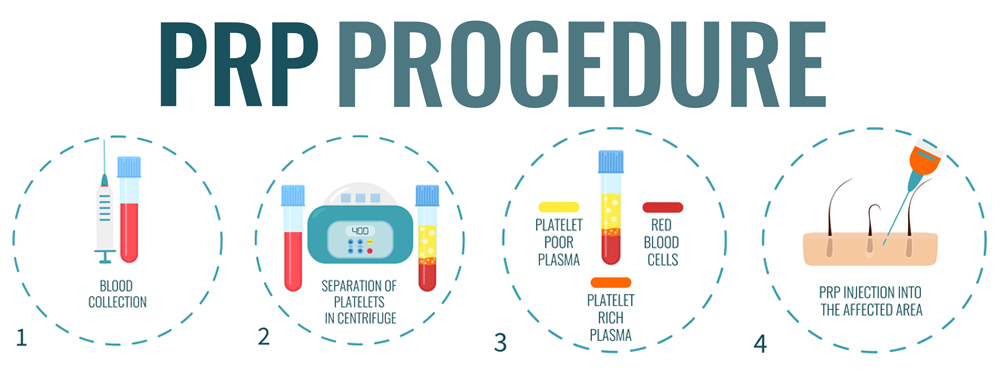Hair loss can be discouraging, especially when it starts to affect your confidence and self-image. Platelet-Rich Plasma (PRP) therapy has emerged as a popular non-surgical treatment for those seeking to restore hair density naturally. But one of the most common questions people ask before starting: How long does it take to see results from PRP?
Here’s a detailed breakdown of what to expect based on clinical standards, treatment plans, and real patient timelines.
What Happens During a PRP Hair Session?
PRP therapy is based on using your body’s own regenerative power. It begins with a small blood draw, after which the blood is spun in a centrifuge to isolate the platelet-rich plasma. This golden plasma is then injected into areas of the scalp experiencing thinning or hair loss.
The platelets are packed with growth factors that stimulate dormant hair follicles, improve blood circulation, and promote the natural regrowth of hair. Most clinics perform the procedure using either direct injections or microneedling, both designed to maximize absorption.
When Will You See Noticeable Results?
While PRP isn’t an instant solution, it delivers gradual and measurable outcomes over time. Based on most patient experiences:
- Weeks 1–3: Some reduction in hair fall and slight improvement in scalp texture
- Weeks 4–8: Early signs of new hair (soft, short baby hairs) may begin to appear
- Months 3–4: Hair starts looking visibly fuller in treated areas
- Months 6–9: Peak results in density, volume, and overall scalp health
It’s essential to understand that PRP doesn’t work overnight. Since it’s a biological process, results unfold gradually and vary by individual based on age, health, lifestyle, and the severity of hair loss.
How Many Sessions Will You Need?
Most practitioners recommend a series of 3 to 4 initial sessions, spaced 4 to 6 weeks apart. This consistent stimulation helps activate follicles over time and allows for a sustained hair regrowth cycle.
After the initial phase, maintenance sessions every 6 to 12 months are advised to retain the benefits. These booster sessions help prevent regression and support long-term follicle health. Clinics often adjust the plan depending on how your scalp responds to the treatment.
Is PRP Safe and Minimally Invasive?
One of PRP’s biggest advantages is its safety profile. Since the treatment uses your own blood, there’s virtually no risk of allergic reaction or rejection. It’s also minimally invasive; no general anesthesia or lengthy downtime is required.
The procedure typically takes under an hour, and most people can resume normal activities the same day. Mild redness, swelling, or sensitivity at the injection site may occur, but these effects usually subside within 24–48 hours.
If you’re considering PRP Dubai, it’s crucial to choose a certified provider with experience in aesthetic medicine, sterile protocols, and a strong track record in regenerative treatments.
How Will You Know It’s Working?
In the early stages, signs of progress can be subtle. Many patients don’t immediately see visible hair growth but do notice:
- Reduced daily hair shedding
- Improved hair texture and scalp hydration
- New, fine hairs beginning to fill in thin patches
Photos taken at follow-up visits are useful for tracking changes over time. Around the third month, most clients begin to see fuller, healthier strands particularly along the hairline and crown.
PRP Has Limits Set Realistic Expectations
While PRP is highly effective for early-stage hair thinning, it’s not a miracle solution. It works best for:
- People experiencing mild to moderate hair thinning
- Patients with active follicles that haven’t been permanently lost
- Those addressing post-partum, hormonal, or stress-related hair loss
It’s less effective for individuals with advanced baldness or scarring alopecia, where follicles are no longer viable. Your provider will typically evaluate your scalp and hair history before beginning treatment to determine if PRP is the right choice.
Combining PRP With Other Treatments
PRP can be even more effective when combined with complementary therapies like:
- Topical minoxidil (Rogaine)
- Biotin or iron supplementation
- Microneedling or laser scalp therapy
- Mesotherapy and growth factor serums
These additional methods can enhance follicular response, especially in stubborn or slow-responding areas. A custom treatment plan that combines modalities will often yield better long-term outcomes.
Who Makes a Good Candidate?
Ideal candidates for PRP hair restoration include:
- Adults experiencing hair thinning rather than complete baldness
- Non-smokers or those in generally good health
- Individuals with realistic expectations and a commitment to follow-up care
- Men and women noticing early signs of pattern hair loss or hairline recession
If you’re looking into PRP treatment in Dubai, ensure your provider conducts a thorough consultation and tailors the plan to your unique hair and scalp condition.
Final Word: PRP Is a Journey, Not a Quick Fix
PRP therapy is a smart and scientifically backed approach to treating hair loss especially when started early. While it requires patience, most clients begin to see visible results between the third and sixth month, with optimal density and strength achieved by month nine.
Consistent care, maintenance sessions, and a healthy lifestyle all play a part in sustaining your results. With the right guidance and expert support, PRP can offer a natural and long-term improvement in your hair health and confidence.


Leave a Reply